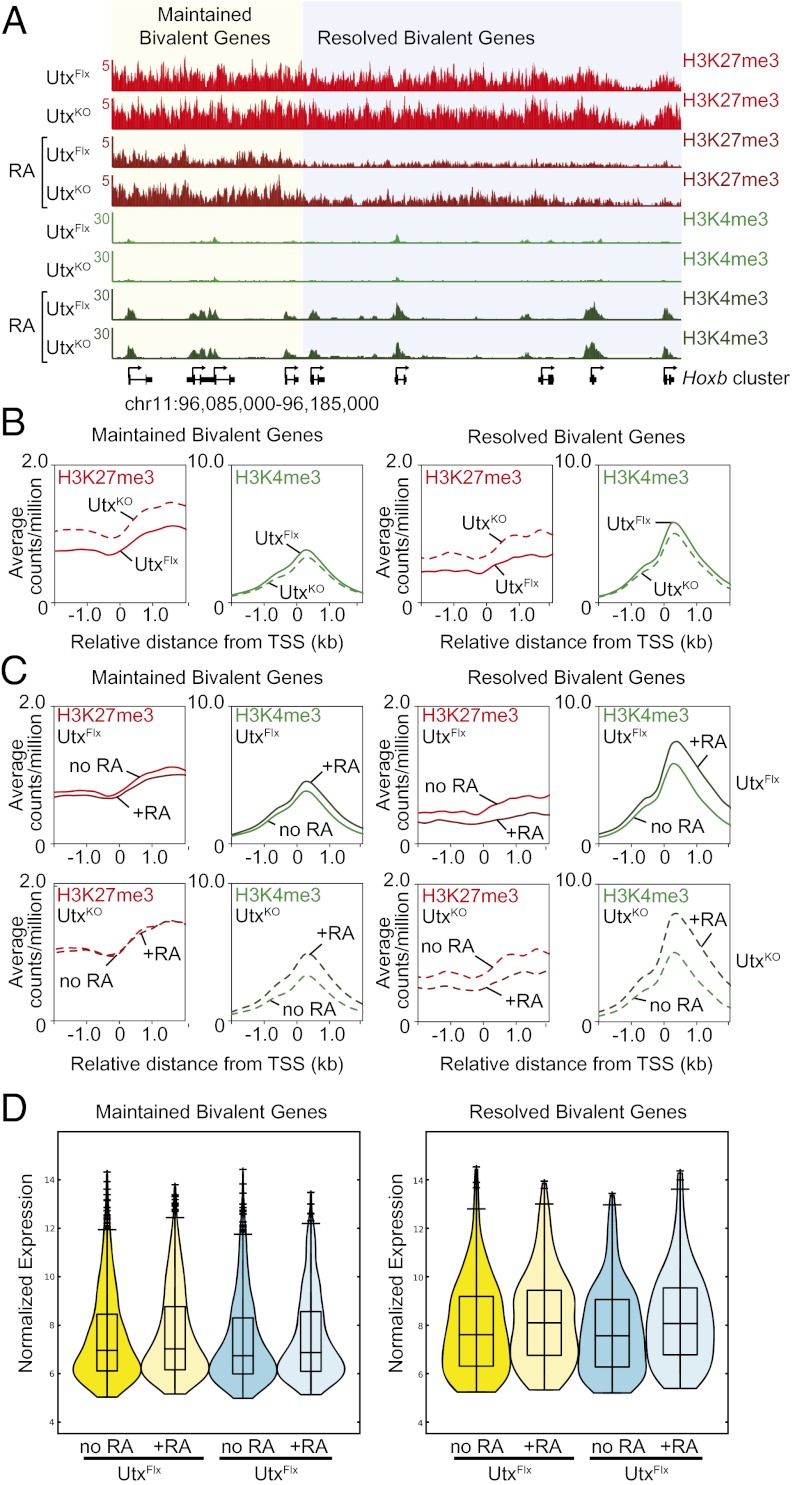Fig. 3.
UTX is not required for RA-induced differentiation. (A) Increased levels of H3K27me3 at the Hoxb cluster in the absence of UTX. H3K27me3 (red) and H3K4me3 (green) gene tracks for male ES cells with restored UTX expression (UtxFlx) and Utx-null (UtxKO) male ES cells that were untreated or treated with RA. During differentiation, bivalent genes can be maintained (yellow shading) or resolved (blue shading). Maintained bivalent genes are defined as those that maintain significant levels of H3K4me3 and H3K27me3 during RA-induced differentiation. Resolved bivalent genes are defined as genes that lost H3K27me3, but retained H3K4me3. The y axis floor is set at 0.5 reads per million. Gene models are shown below the density profiles. (B) Bivalent genes in UTX-deficient ES cells have increased levels of H3K27me3 and a reduction in H3K4me3. Metagene representations of the average H3K4me3 (green lines) and H3K27me3 (red lines) levels around transcription start sites (±2 kb) for wild-type (solid lines) and Utx-deficient (dashed lines) ES cells. (C) Demethylation of H3K27me3 in UTX-deficient ES cells in response to RA. Metagene representations of the average H3K4me3 (green lines) and H3K27me3 (red lines) levels around transcription start sites (±2 kb) for wild-type (solid lines) and Utx-deficient (dashed lines) ES cells. H3K27me3 levels are reduced at resolved genes for both wild-type and UTX-deficient ES cells. (D) UTX-deficient male ES cells are transcriptionally responsive to RA. Violin plots summarizing the gene expression of wild-type (UtxFlx) and UTX-deficient (UtxKO) ES cells grown in self-renewal conditions (no RA) or under differentiation conditions (+RA). Maintained and resolved bivalent genes were analyzed.

